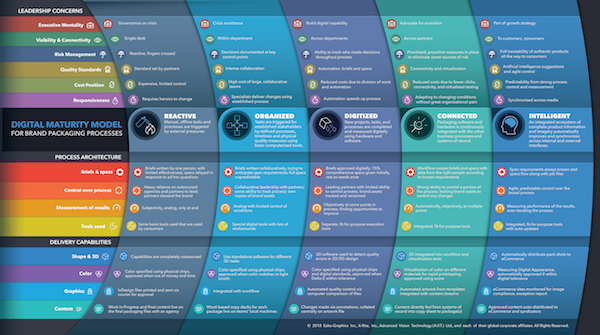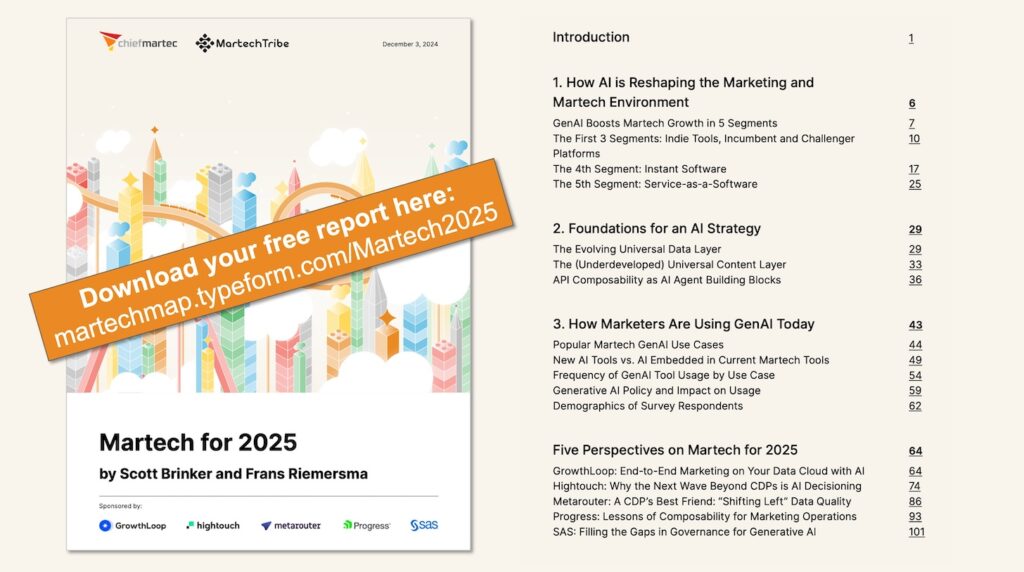The following is a guest post by Danielle Sauvé, marketing director for the product identification platform for Danaher and editor of SimplifyMyPackaging.com.
We talk about digitizing everything, but if you’re a marketer at a consumer goods company, you know there is a divide between digital marketing channels and product packaging.
As evidence of this divide, marvel at this difference in perceived vs. actual production time:
The CMO Council found that 77% of marketing leaders think it takes 90 days or less to make a packaging change or other physical change. But when InfoTrends asked packaging professionals, they reported that changes take an average of 6.6 months (about 198 days).
And then behold this difference in expectations between marketers and consumers:
Marketing leaders would like to make packaging changes with 30 days of lead time according to the CMO Council. Consumers have a very different perspective. According to a poll on their expectations, consumers don’t understand why packaging changes and other physical media can’t be made in one day.
Yes, you read that correctly. The current state is 198 days; consumer expectations are 1 day.
Marketers don’t seem to have much awareness of what goes on behind the black curtain separating them from the packaging department, and therein lies a significant opportunity. Digitizing packaging can help close this gap in expectations and actuals and also realign communications. Here’s why it’s important:
- Packaging changes are taking 198x longer than consumers expect (see above).
- For marketing to become more relevant and effective, the product and efforts to market it need to become more closely entwined.
- When your product is physical, as for consumer packaged goods companies, digitizing product packaging is one way to keep digital channels aligned with the physical product.
- What if brand images online could always match the actual packaging because there was a living link between packaging files and e-commerce?
- What if brands could automate what are now very tedious tasks in artwork creation to allow localized packaging iterations for regions and line extensions?
- What if we could be certain the allergens on the packaging were true because no human had re-keyed it after R&D approved it (the veracity of the data was absolutely preserved)?
- What if brand marketers could be certain that the color and material specifications distributed to all 50 packaging suppliers around the world were produced faithfully, within the tolerance the brand requires because the empirical data fed back from the supply chain partners proved it?
- What if packaging changes were more responsive, taking only 10 days instead of 198?
But, digitizing packaging? What does that even mean?
Look at it this way: when a company creates brand packaging, more than fifty little bits of information are gathered from all over the organization such as ingredients and net weight from R&D, material specifications from packaging engineers, color specifications from design, brand logos and romance copy from brand management, copyright from legal, nutrition facts and symbols from regulatory, to name a few. Much of this information is gathered as content, frozen in a picture file as the package design (mechanical files to get technical) and then sent off to a printer or converter, who manufactures the packaging.
The manner in which this critical product information is gathered and the extent to which it is shared can vary widely from brand to brand, from CPG company to CPG company. But all have one thing in common: the process and the content can be digitized to achieve efficiencies, automation, improved quality, and scalability.
If the information is important enough to be included on the precious real estate of the package, then it is valuable for selling purposes. This means the same sale-inducing information needs to be available to sales channels, including online retailers and a brand’s own e-commerce or direct-to-consumer channels, at minimum.
Many brand marketers manage packaging at an arm’s length through a separate silo in their organization, but the benefits of reaching across the marketing/packaging divide are quite compelling.
These are all realities that can be attained when packaging is digital. But how can you integrate the physical and digital together? Where would you even start?
Using the Digital Maturity Model for Brand Packaging, brand marketing leaders can establish a vision for digitizing packaging, develop their packaging tech stack, connect packaging to the digital supply chain and realign the product with marketing. This graphic notes the changes in organizational maturity along fourteen dimensions that have been identified and categorized into three groups:
Leadership concerns track the levers and advantages the business leadership are most interested in: Executive Mentality, Visibility & Connectivity, Risk Management, Cost Position, Quality Standards, and Responsiveness.
Process architecture is the infrastructure that supports the team’s day to day functions in terms of Briefs & Specifications, how they exert Control Over the Process, what kinds of Tools they use, and how they Measure Results.
Delivery capabilities are the specific components of producing packaging that must be controlled in the value chain: Structure & 3D, Graphics (2D), Color, and Content (or words and information and symbols).
These groups of dimensions combine to describe five levels of digital maturity for brand packaging, from Reactive to Intelligent.
If you read one maturity level vertically, you will formulate a picture of the different perspectives within the company from top to bottom, starting with executive management’s attitudes and concerns at the top, team managers’ process and communication prerogatives in the middle, and then the technical specialists’ considerations for delivering packaging to market.
It’s easy to see that digital capabilities evolve and become more valuable as you follow the line of one dimension across the maturity model from left to right. For instance, as a brand organization develops more and more digital capabilities in packaging, the scope of visibility over what is happening in the packaging process broadens from a single desk to across departments, to across suppliers and partners and even through to consumers and retail customers. This visibility is not possible at scale without digital tools embedded in the value chain.
Using this maturity model, brand marketers can spark conversations among cross-functional teams to determine which capability level best describes their organization. Which dimensions are outliers, lagging far behind the others? They can investigate what technologies comprise their packaging tech stack, how deep into the value chain their stack penetrates, and the benefits that await them if they are to gain further digital capabilities.
This framework also provides a language for teams to use to align their efforts and work toward common goals and a vibrant future state. Given the disconnects between marketing and packaging, this kind of common vision and language is sorely needed.
Remember, packaging is of primary importance for consumer goods companies. Consumers connect differently with packaging than other marketing vehicles. Packaging is owned media. Packaging often IS the product — indistinguishable from the consumer’s perspective. Packaging is the first impression of quality for the brand.
Let’s digitize packaging and enjoy all the benefits of control and analysis and visibility that martech affords us. Who knows, maybe one day Scott Brinker will add a “packaging” section to his marketing technology landscape?
Sources:
The Responsiveness Requirement, CMO Council.
The Future of Digital Packaging Workflows, InfoTrends.
Thanks, Danielle!




I concur that digitizing packaging ensures that we enjoy all benefits of control and visibility and analysis that are afforded to use by martech.